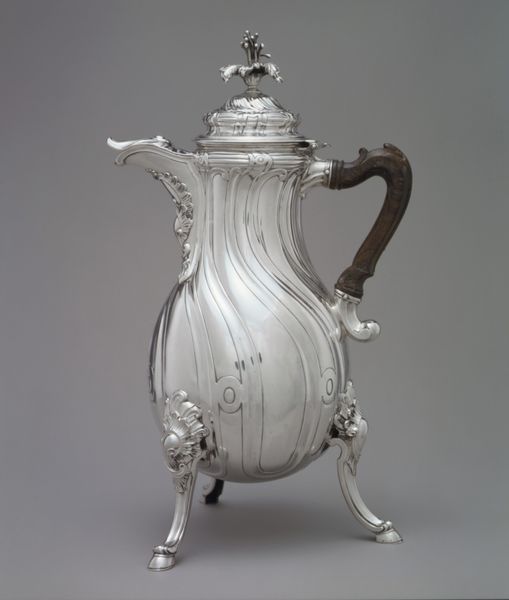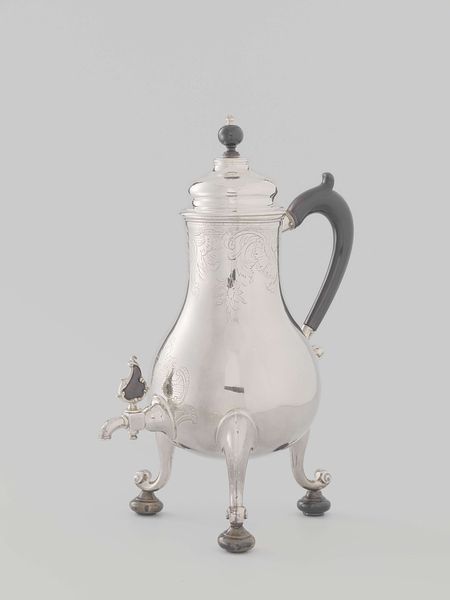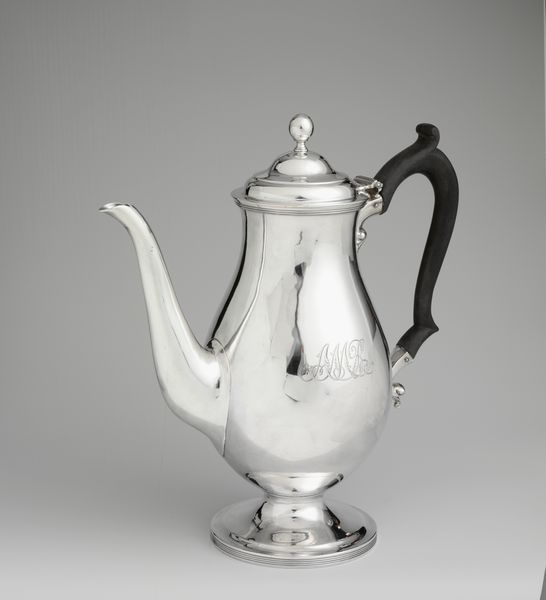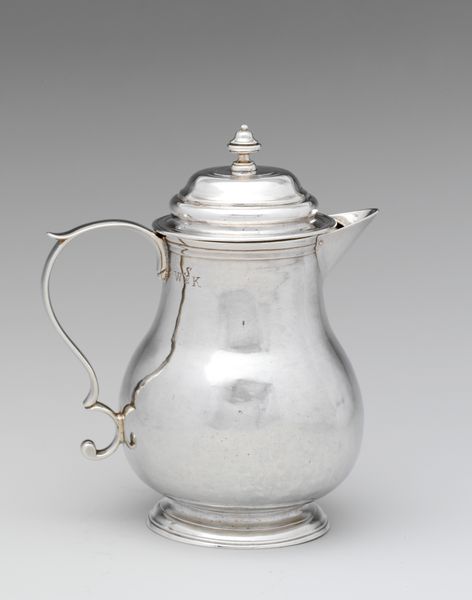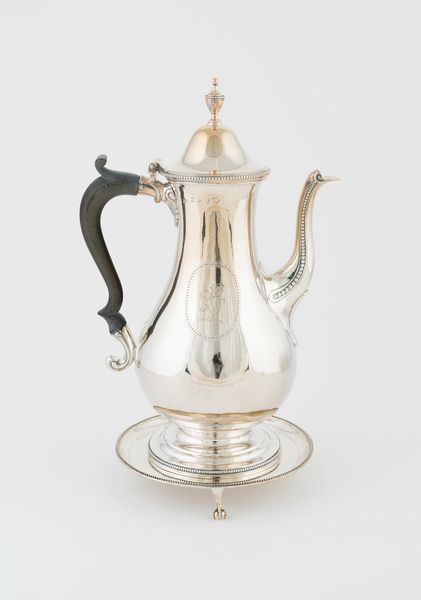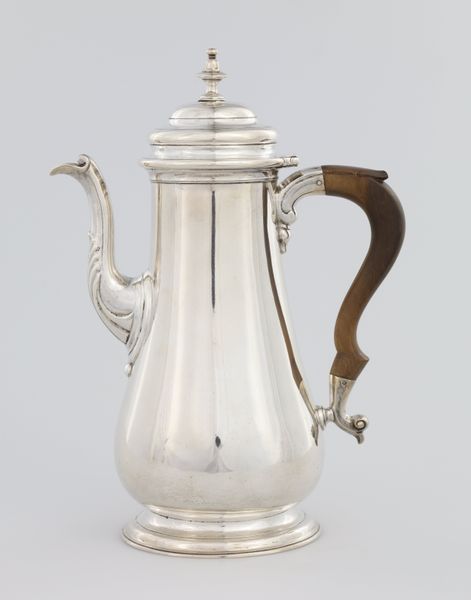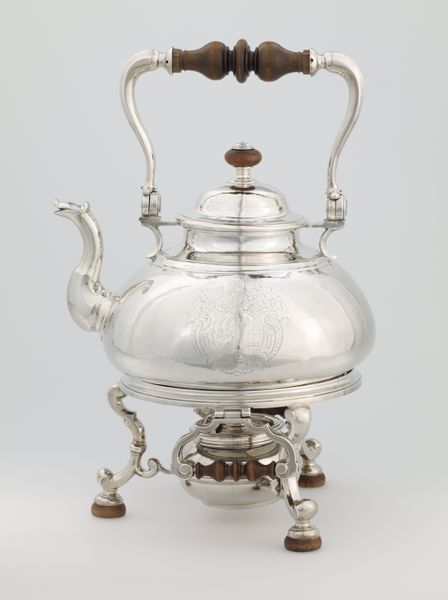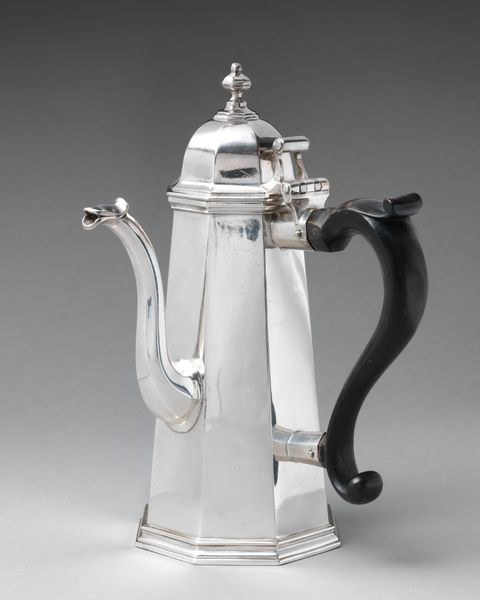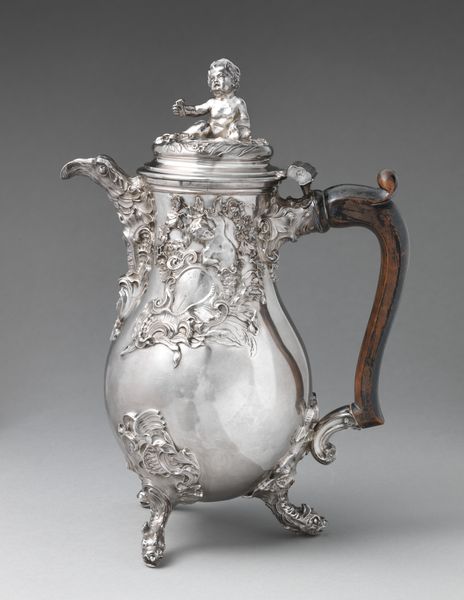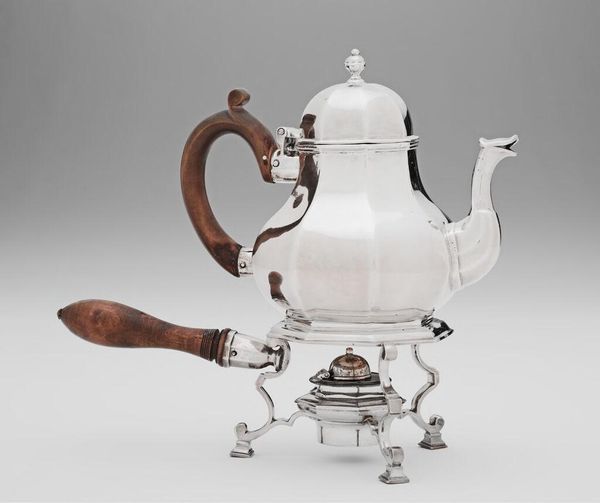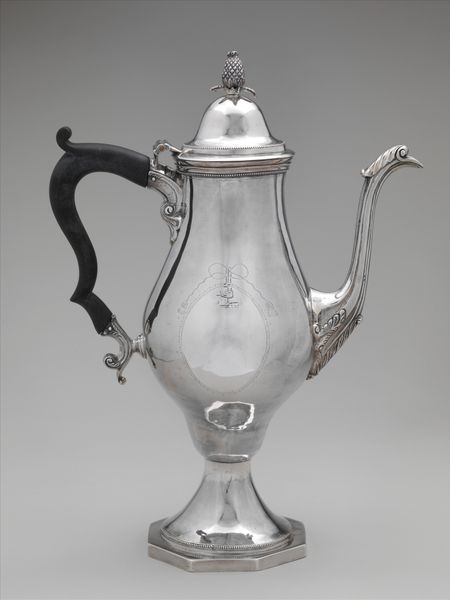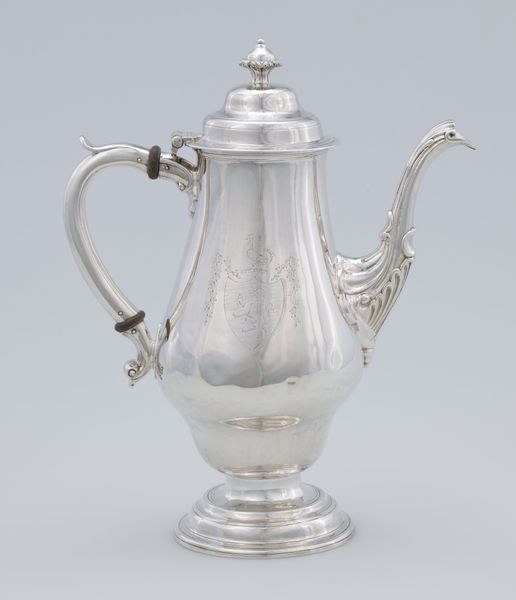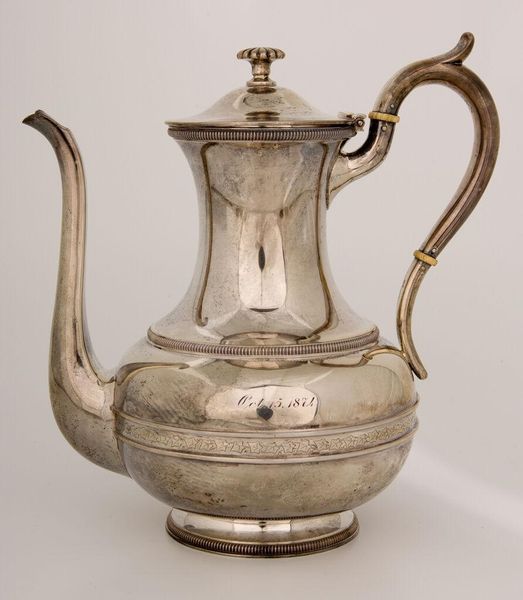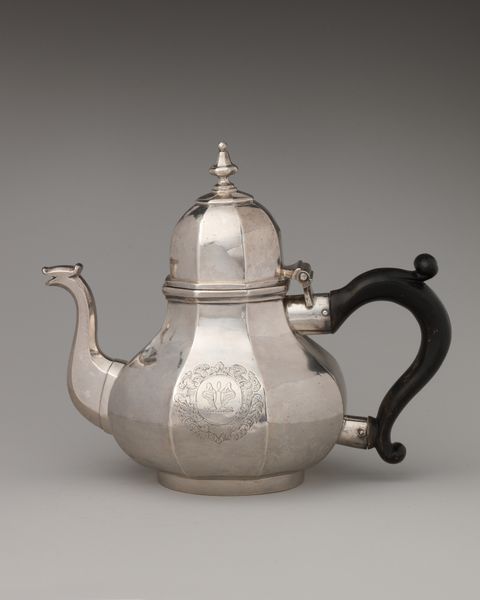
Dimensions: height 37.1 cm, diameter 14.2 cm, weight 1109 gr
Copyright: Rijks Museum: Open Domain
This silver kraantjeskan, or hot water pot, was made by Wijnand Warneke in the Netherlands during the 18th century. Its elaborate design reflects the wealth and status associated with the consumption of tea and other hot beverages at the time. During this period, the Dutch East India Company dominated the trade of tea and spices, and items associated with this commerce became fashionable status symbols. Silverware like this kraantjeskan was thus not just a functional object, but also a display of affluence and sophistication. The pot’s ornamentation, with its floral motifs and refined curves, speaks to the aesthetic preferences of the Dutch elite and their embrace of luxury goods. The pot also underscores the complex relationship between art, trade, and social class in 18th-century Dutch society. To fully understand this object, historians would turn to archival documents such as trade records, inventories of wealthy households, and studies of Dutch social history. These resources would provide a deeper understanding of the cultural context in which this kraantjeskan was created and used.
Comments
No comments
Be the first to comment and join the conversation on the ultimate creative platform.
